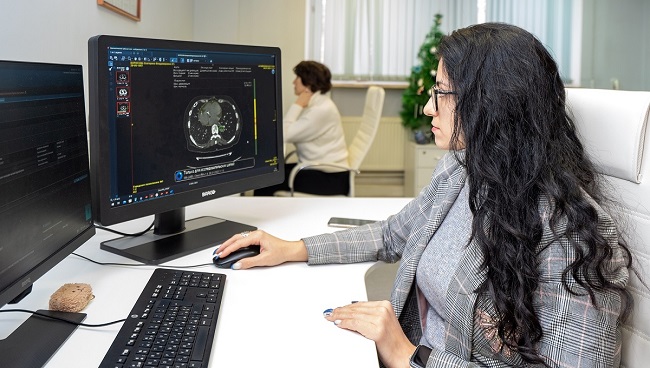World’s fastest production-ready smart eBike BeiGo X4 is all set for government certification
Artificial intelligence helped radiologists analyze 10 million studies
Published on June 23, 2023

In a remarkable feat, Moscow radiologists have harnessed the power of neural networks to examine an 10 million medical images. By utilizing smart algorithms, these experts have been processing an average of 270,000 X-ray examinations per month. Anastasia Rakova, Deputy Mayor of Moscow for Social Development, highlighted the city’s systematic scientific and practical efforts to integrate artificial intelligence into healthcare.
Rakova emphasized the meticulous implementation and quality control of artificial intelligence. Through the unified radiological information service medical institutions in the capital now have access to over 50 algorithms across 21 modalities to interpret medical images.
Computer vision technologies employed in medicine have notably enhanced the efficacy of diagnostic radiology. These innovative algorithms accurately identify potential pathologies by marking them with color-coded indicators on the images. Moreover, they perform clinical measurements that support physicians in making diagnoses and provide comprehensive descriptions. Crucially, computer vision technology enables the detection of pathologies at an early stage, often imperceptible to the human eye.
Artificial intelligence now facilitates the detection of various diseases in X-ray images, including lung cancer, COVID-19, osteoporosis of the spine, aortic aneurysm, coronary heart disease, stroke, pulmonary hypertension, hydrothorax, breast cancer, herniated discs, and flat feet. Remarkably, certain advanced AI services can detect up to 10 pathologies on a single medical image.
Artificial intelligence is extensively employed in the processing of fluoro-, mammo-, and radiography, as well as computed and magnetic resonance imaging. In 2022, other regions across Russia joined this initiative through the adoption of the Hub Telemed platform, operated by the Moscow Department of Health.
Yury Vasiliev, Senior Consultant for Radiology of the Moscow City Health Department and CEO of the Center for Diagnostics and Telemedicine highlighted the indispensable role of artificial intelligence in healthcare. Vasiliev expressed the department’s eagerness to extend the project to encompass regions throughout Russia, aiming to provide widespread access to the benefits of AI-assisted diagnostics. Notably, radiologists in the Yamalo-Nenets Autonomous region and the Clinical Interdistrict Hospital of the Leningrad Region are already utilizing seven artificial intelligence services across four research domains. With neural networks having processed over 27,000 medical images in the Yamalo-Nenets Autonomous Okrug alone, regional clinics transmit anonymized studies to the Center for Diagnostics and Telemedicine’s platform for analysis by artificial intelligence. The results are then returned to the attending physician for final imterprwtation. Rigorous oversight by specialists, who collaborate closely with developers and collect feedback from doctors, ensures a continuous improvement in algorithm quality. This initiative extends a warm invitation to other regions of Russia to join the project and contribute to its advancement.
Since 2020, Moscow has been at the forefront of integrating smart algorithms in its medical institutions as part of an ongoing experiment to incorporate computer vision technologies. Spearheaded by the Center for Diagnostics and Telemedicine and with the support of the Department of Information Technologies, this initiative forms part of a broader social development complex in Moscow. Notably, the experiment’s scientific findings have led to the development and implementation of 11 national standards governing the use of AI in healthcare, with 10 already in effect.
Beginning in 2023, the cancer screening using neural networks has been officially included in the medical services and a special tariff. Thus making Moscow the first city to introduce artificial intelligence in compulsory health insurance.




















